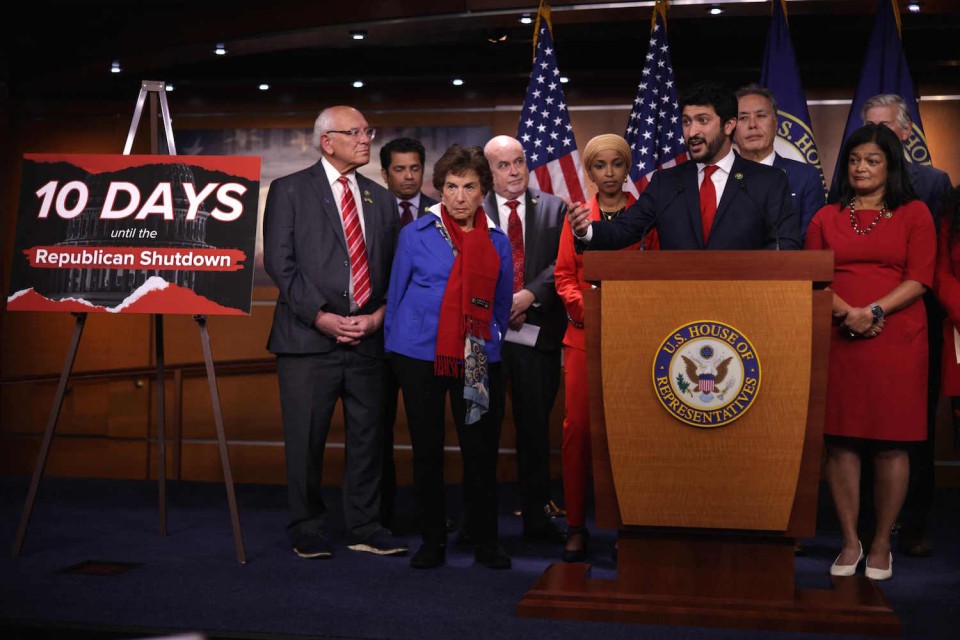
By Julie Chabanas and Frankie Taggart
WASHINGTON, Sept 25, 2023 (AFP) – Millions of Americans braced Monday for pay and welfare checks to stop within days as Congress careened toward a damaging government shutdown, with Republican right wingers blocking attempts to pass a budget.
Four months after barely avoiding the more serious prospect of a credit default, the world’s largest economy is once again on the verge of a convulsion, with the lights due to go out at the weekend.
Republicans leading the House of Representatives — hamstrung by hardline rebels demanding deep spending cuts — have been unable to pass the usual series of bills setting out departmental budgets for the next financial year, which begins on Sunday.
The party’s leadership does not even have the votes to advance a short-term funding bill at 2023 spending levels — known as a continuing resolution — to keep the government open past midnight on Saturday.
A shutdown would put at risk the finances of workers at national parks, museums and other sites operating on federal funding, but it could also carry significant political risk for Biden as he runs for re-election in 2024.
The White House warned Monday that seven million people who rely on the food aid program for women and children known as WIC could also see their money stopped.
“During an Extreme Republican Shutdown, women and children who count on WIC would soon start being turned away at grocery store counters, with a federal contingency fund drying up after just a few days and many states left with limited WIC funds to operate the program,” a spokesman said in a statement.
The deadlock arose after House Republicans refused to support the government spending levels agreed between Biden and Speaker Kevin McCarthy, the top Republican in Congress, that would keep government gears turning.
Another major sticking point has been a request for additional aid for Kyiv, after Ukrainian President Volodymyr Zelensky visited Congress last week pleading for more weapons to battle Russian forces 18 months into the war.
Both parties in the Senate support the $24 billion aid bill. But a handful of hardline Republicans in the House are threatening to block any funding measures that include the aid.
“UNLESS YOU GET EVERYTHING, SHUT IT DOWN!,” former president Donald Trump demanded in a post on his Truth Social platform late Sunday as he led calls for the Republican hardliners to dig in.
– Polarization –
The budget vote in Congress regularly turns into a standoff, with one party using the prospect of a shutdown to seek concessions from the other, usually without success.
Trump, who is also running for re-election, forced a 35-day shutdown over border controls in 2018 but ended up reopening the government after failing to secure a single concession from Democrats.
The impasse is invariably resolved before the standoffs become crises but this year the showdown is exacerbated by new levels of polarization on Capitol Hill.
In the Senate, debate is led by two political heavyweights, Democratic majority leader Chuck Schumer and Mitch McConnell, his Republican counterpart.
Congress was out Monday but Schumer has been paving the way for a continuing resolution, including Ukraine aid, in talks with McConnell and the White House.
A measure that would keep the government open through early December has support on both sides of the Senate — but would likely not be ready for a vote before the shutdown and would not have the support of the Republican right.
The shutdown prospect comes just four months after the United States came dangerously close to defaulting on its debt, which could have had disastrous consequences for the American economy and beyond.
The US government employs more than two million civilian workers, as well as uniformed military personnel and federal contractors.
If the government were to halt operations, air traffic could be disrupted and national parks could close. Civil servants deemed “non-essential” would be asked to stay home, receiving paychecks only when the problem is resolved.







